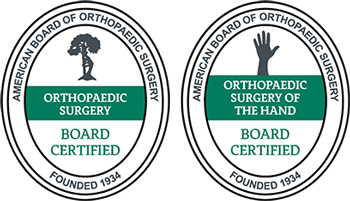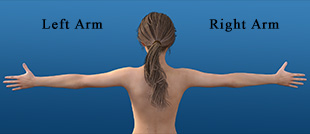Effects of NSAIDs vs. Generic Pain Relievers in Hand and Wrist Injuries

NSAIDs, or nonsteroidal anti-inflammatory drugs, are usually prescribed for daily aches and pains such as arthritis or headaches. Ibuprofen and aspirin are the most common NSAIDs that people are familiar with since they are over the counter and don’t require a prescription. NSAIDs help reduce pain and inflammation and can even reduce fevers making them a great option for hand and wrist injuries.
Generic pain relievers are not “name brands,” such as Tylenol, Motrin, and Aleve. They come from nearly every big box store or drug store under the company’s name, such as Target’s Up & Up brand. While generic products may have a reputation for being the knock off version of an item, that is not always the case, particularly with generic drugs.
NSAIDs
NSAIDs, simply put, are pain relievers. In addition to the inflammation and fever relief, they also reduce blood clotting, which may be sufficient for protecting against heart disease. Reducing blood clotting is not always beneficial, depending on your health conditions. Side effects of taking NSAIDs include nausea, bruising easily, a sensitive or upset stomach, and possibly ulcers. In rare cases, kidney function may be affected.
The risks for taking NSAIDs are not high unless you are pregnant, asthmatic, older than 65, or have a history of ulcers, liver, or kidney disease. It is essential to talk to your doctor about taking NSAIDs if you are already on medication because they may augment or counteract certain drugs’ effects, which could be dangerous.
NSAIDs prevent the enzyme cyclooxygenase, also known as COX, from doing its job to trigger a change in the body. Cox comes in two forms–COX-1 maintains kidney function and protects the lining of your stomach from digestive chemicals and harsh acids. On the other hand, COX-2 is only triggered when you injure your joints, and they swell.
These enzymes are blocked when you take an NSAID, which is why side effects such as an upset stomach and bleeding can occur, but this also soothes the inflammation and pain. Like with any other medication, NSAIDs should be taken with a glass of water or food instead of alcohol. Since everybody is different, some NSAIDs may work differently for you compared to another brand. If you are unsure which to take, your doctor can point you in the right direction, especially if you are unsure which dosage or strength to endure.
Alternatively, some NSAIDs only target the COX-2 inhibitor. These medicines typically don’t cause bleeding or an upset stomach like most NSAIDs do, nor do they provide protection against heart disease. They only target the enzyme that stimulates the body’s inflammatory response. NSAIDs that are COX-2 inhibitors include Celebrex. It is essential to talk to your doctor about taking these medications and letting your doctor know if you have suffered from a stroke, heart attack, angina, hypertension, a blood clot, or other heart conditions. A rare but severe side effect is abdominal bleeding.
Generic pain relievers
A common misconception is that generic brands do not work as well as name-brand products. This may be the case for something like fruit snacks or cookies, but this is not the case with generic drugs.
Generic drugs are made with the same active ingredient as name-brand drugs, so they are manufactured to work the same way. Because the active ingredient is the same, they have the same strength, quality, and the dosage is the same as a name-brand drug. Even with the different names, the drugs are made to work the same way.
Generic drugs are just as effective as name-brand drugs. Companies that manufacture drugs have to prove to the Federal Drug Administration that name-brand and generic drugs can be substituted for each other and still produce the same benefits. So unlike generic foods, you can easily switch between generic and name-brand medicines and receive the same results.
Name-brand NSAIDs are more expensive than generic versions. Since the manufacturing companies conduct mandatory tests or clinical trials, an excessive amount of money is spent to accomplish these trials and prove that the drugs are safe and work in the way they will be advertised. Due to the money spent on these tests, some of those costs are passed down to the consumer, resulting in a more expensive drug.
The price difference between name-brand NSAIDs and their generic counterparts can be drastic and up to 85% cheaper than the name-brand drug with the same purpose. If cost is an issue for a drug that is not as common as ibuprofen, this is an excellent option as the price difference can be dramatic.
It is just as safe to take a name-brand NSAID as it is to take a generic drug. The FDA heavily regulates the industry to ensure high-quality products that produce the same effects. Even if certain ingredients are different, the FDA ensures that the drugs are safe and effective through vigorous testing. Everything from the ingredients to the container is tested for safety and durability, and the manufacturing plants are routinely inspected. If there are reports or concerns of adverse or unusual side effects, the FDA will investigate and will change the formula if needed.
Conclusion
There are dozens of name-brand NSAIDS, along with generic pain-relieving medication. NSAIDs’ effects compared to generic pain relievers are the same because they are made with the same active ingredient making them both a great option for hand and wrist injuries. A generic pain reliever should work just as effectively as a name-brand competitor. They are tested for quality, effectiveness, and safety to certify that the drugs are safe to use. They are great for general pain relief, such as headaches, joint pain, and even fevers.
Although name-brand NSAIDs may be the better option, the majority of the time, it is just as useful to opt for the cheaper, generic option if it is available. NSAIDs are a simple option for your pain relief that is readily available at your local pharmacy or grocery store.

























